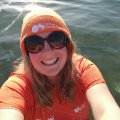Who runs the world? girls: leadership growth for women
)
Update March 2018
According to the new Conrad Gender Equality at Work Report released in March 2018, there has been a slight shift in the number of women employed in leadership roles compared to CEOs named Peter, John or David. Now there are more ‘Andrews’ leading ASX 200 organisations as CEOs, than there are women in the same position. Despite women remaining the most educated segment of the labour market in 2018, the gender pay gap is still at 15.3 per cent. This is also despite that the performance indicators show "companies with greater gender diversity outperform the market and their peers". However it's not all bad news, with a significant rise in female CFOs from 8 to 20, and the ASX 200 board rate at it's highest of 26.6%, there are some changes that hopefully spell a more equal future for women in leadership.
Beyonce, that proponent of Girl Power and feminism once famously said,
"Take all the rules away. How can we live if we don’t change?"
She also asserted that girls run the world, so we did a bit of research to see if she was right and found that the presence of the mythical ‘girl boss’ is still sadly lacking. Although worldwide there are currently 15 female leaders in office, that still only represents less than 10% of the leadership among current UN member states. Whilst this situation reflects a change in the right direction, there was only around half that number of female world leaders in 2000, it is clear that we have a long way to go before we can agree with Beyonce and say that girls run the world. Australia for example has only had one female prime minister, Julia Gillard.
The picture of the position of women in Australia’s industries doesn’t bring much better news. In February 2017 Conrad Liveris, a workforce diversity specialist, revealed research suggesting that the number of Australian women in industry leadership roles had fallen between 2016 and 2017. Indeed you are more likely to be in a top role in Australia if your name is John, Peter or David than if you are a woman. The employment picture for women in Australia however isn’t all bad. Companies are starting to recognise the qualities that women can bring to the workforce and recruitment patterns are finally changing. We look at two Australian organisations that have made efforts to attract more female employees.

Telstra
The telecommunications giant Telstra, who at number 482 are one of only three Australian companies to make it into the Fortune Global 500 lists, are one of Australia’s biggest employers with a workforce of 35,000. They currently have an unfortunate lack of female employees at only 30% but recent announcements by their CEO Andy Penn outline new company recruitment policies that are set to redress the balance. Mr Penn said,
"We simply must work harder to create new opportunities for women to participate including accommodating diverse needs, working preferences and creating new career paths for both men and women to re-enter the workforce."
To accompany the usual discussions of women in work, flexible working and new work-paths, Telstra appear to be putting their money where their mouths are with the announcement that henceforth at least 50% of interview selection candidates will be women. This represents a considerable leap for Telstra as currently the average percentage of female interview candidates is only 33%.
As with all excellent news, Telstra’s statement comes with caveats and they have reserved the option to reduce the female candidate target to 25% for job roles, which the labour market states have a shortage of prospective female candidates. They are however keen to promote their new policy and have stated a possible extension of the advertising period if suitable female representation is not found.
Telstra are very public about the significance of their approach to female employment. They have a dedicated ‘Women at Telstra’ webpage with links to positive messages, company policies and career-based information. They have also undertaken pay gap analysis in their annual remuneration cycle since 2007 and since 1995 have run the Telstra Business Women’s Awards. Their efforts towards gender equality have been recognised by the WGEA (Workplace Gender Equality Agency) and Telstra hold their EOCGE (Employer of Choice for Gender Equality) citation.
Our last word about Telstra’s support for gender equality, quite rightly comes from Michelle Roach, General Manager at Telstra’s NBN Operations Centre,
“I would not have been given the opportunities that I have as a woman or as an individual, at other companies that I have worked for, as I have been at Telstra.”

Mirvac
Things are starting to move in the right direction for women in the property development and construction industries, with Mirvac who have also been awarded a WGEA EOGCE citation.
Mirvac is one of only a few ASX-200 companies to have achieved the coveted board goal of 50% or more female directors. Mirvac have worked hard to accomplish this, with strategic target setting and detailed monthly reporting on female employment at all organisation levels, being the final step in a top-down approach. As with Telstra, for leadership posts, Mirvac have a 50% female shortlist requirement but insist that only viable candidates appear on these shortlists.
Mirvac have also put a good deal of time and effort into the creation and company-wide promotion of flexible working. Instead of making this a women only strategy, Mirvac have worked with all employees and can now boast a 60% flexible working arrangement take-up and the associated improved employee engagement. In order to establish a reality-based view of flexible working requirements, Mirvac introduced its ‘My Simple Thing’ scheme, which asked employees to explain the one thing that would make their work/life balance easier to manage. Despite starting as an individual approach, ‘My Simple Thing’ quickly progressed, because of the team-based nature of site work, to a team effort whereby employees began supporting each other and developing new ways to make flexible working operate for the success of the whole team, male and female alike.

As a high-profile woman in a male dominated industry, Mirvac’s CEO Susan Lloyd-Hurwitz’s comments hold particular significance.
"We’ve got to be, as an industry, a lot more open to different points of view and inclusion. It’s not just gender, it’s background, education, sexual orientation, where people come from."
Gender parity and equal pay was quite rightly a hot topic at the 2016 World Economic Forum Annual Meeting, with successful women from all over the world responding to the news that, at current rates, it is going to take another whopping 118 years for women in work to earn the same as men.
As Sheryl Sandberg, Chief Operating Officer of Facebook pointed out,
"Men still run the world; I’m not sure it’s going so well."
Of course, now you have read this article you are thinking, ‘Where do I fit in? How can I help to redress the gender disparity balance?’
Well there are a few options. You could do your research and talk to the HR teams at a company that already holds their EOCGE citation or you could ask about company policies that support gender equality, this is also a great question to ask at interview.
One of the most important things that you can do however is to be open-minded about your career options. The evidence above demonstrates that industries such as construction and telecommunications are finally taking steps towards reversing male job domination and increasing diversity. If you fancy a change or would really like to challenge stereotypes, why not take a look at our range of qualifications.
As the tide turns for women’s pay parity, women in Australia now have more opportunity than ever before to be part of something revolutionary. It might take a bit of time but maybe Beyonce and her powerful words were right after all.
Now hear from some women who are experts in their industries with our own Pamela Murray-Jones and Sarah Skotnicki


)
)

